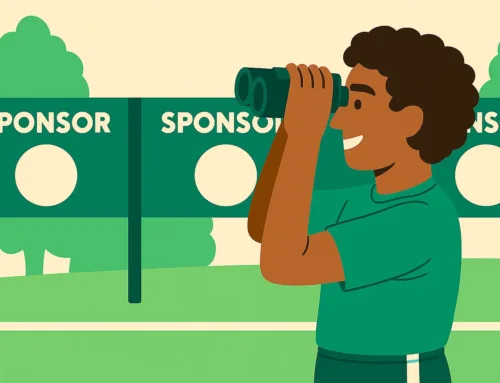What Does a Sponsorship Committee Do? Practical Tips for Success

A sponsorship committee in a sports club or organisation is the team that handles everything related to sponsors. From attracting new partners and managing existing relationships to contracts, invoicing, and communication – this group organizes the club’s sponsorship management.
In this article, we’ll explain what a strong sponsorship committee does today, how to build one, and how digital tools (like a CRM for sponsorship management) help clubs save time and increase revenue. The tips are aimed at board members and volunteers in sports clubs who want a clear and practical approach to professionalize sponsorship.
Why a Sponsorship Committee Is Essential
For many sports clubs, sponsorship is one of the main sources of income. As a club grows, it quickly becomes too much for one board member to handle alone. That’s why a dedicated sponsorship committee is so valuable.
A good sponsorship team does far more than finding new sponsors. They also:
-
manage sponsor relationships,
-
create and update a sponsorship policy,
-
keep track of contracts and payments, and
-
ensure sponsor agreements are fulfilled (boards, shirts, digital ads, events).
Think of it as a small business unit within the club: structured, professional, and accountable.
Building an Effective Sponsorship Committee
An effective committee combines different skills. At least three members are recommended.
Ideal setup for most clubs:
-
Sales-driven member – someone with commercial drive to approach new sponsors.
-
Network connector – someone with business contacts who can open doors.
-
Organizational type – someone focused on contracts, administration, and details.
Larger clubs may need more members, but keep the group manageable. And always connect the committee to the board – often via the treasurer or chairman – so decisions and policies stay aligned.
Key Responsibilities of a Sponsorship Committee
1. Attracting New Sponsors
-
Build a target list of businesses that fit your club.
-
Understand each sponsor’s goals (brand awareness, community involvement, recruitment).
-
Use the club network – ask members which companies they work for.
-
Approach sponsors as partners, not as donors.
2. Managing Existing Sponsor Relationships
-
Always deliver on promises (visibility, tickets, events).
-
Maintain regular and valuable contact (calls, updates, newsletters).
-
Involve sponsors in club life – invite them to events or networking activities.
-
Be proactive if issues arise.
3. Administration and Finance
-
Document every sponsorship agreement clearly.
-
Send invoices on time and monitor payments.
-
Keep track of sponsor visibility (boards, shirts, digital ads).
-
Review and update sponsorship packages yearly.
Pro tip: Use a sponsorship CRM system like Sponsorvista to centralize all sponsor data, track deadlines, automate reminders, and even receive sponsor applications online.
4. Volunteers and Continuity
Most sponsorship committees are run by volunteers. That’s great, but it also means knowledge is fragile. If someone leaves, you risk losing information about sponsor history, contacts, or agreements.
To avoid this, store everything centrally and digitally. With a tool like Sponsorvista, all sponsor data stays within the club – not in someone’s inbox. This ensures continuity, helps new committee members get started quickly, and prevents lost opportunities.
5. Communication and Activation
-
Offer more than logo exposure – create real value.
-
Co-develop sponsor activations and events.
-
Measure and report results (audience reached, engagement, social media stats).
-
Use evaluations to grow partnerships into long-term collaborations.
Choosing the Right Sponsors
Not every sponsor is a good fit. A strong sponsorship policy defines:
-
Club fit: Do the sponsor’s values match the club’s identity?
-
Exclusivity: Avoid conflicts (e.g. two competing car dealers).
-
Local vs. national: Small clubs benefit more from local SME sponsors, while bigger clubs can target regional or national brands.
-
Sponsor goals: Ensure the club can genuinely deliver value in return.
Conclusion: Structure and Tools Drive Long-Term Success
A sponsorship committee in a sports club is more than just a fundraising team – it’s the foundation for sustainable sponsorship management.
With the right people, clear responsibilities, and digital tools like Sponsorvista, clubs can:
-
attract new sponsors,
-
keep current sponsors happy,
-
document all agreements, and
-
maintain continuity, even with volunteer turnover.
The result? Long-term partnerships, financial stability, and a stronger connection between the club and its community. Get started for free with our CRM solution.




